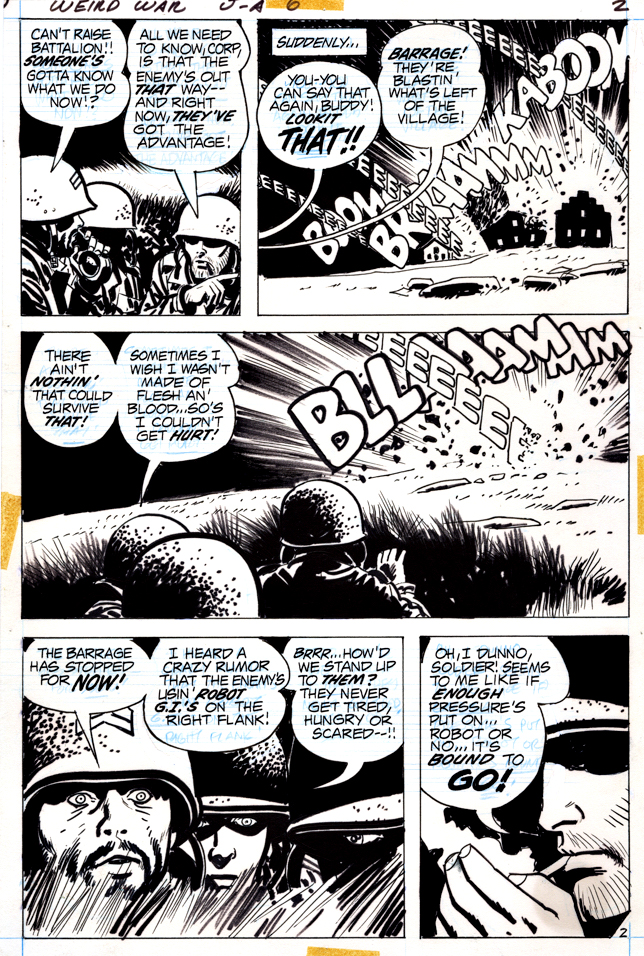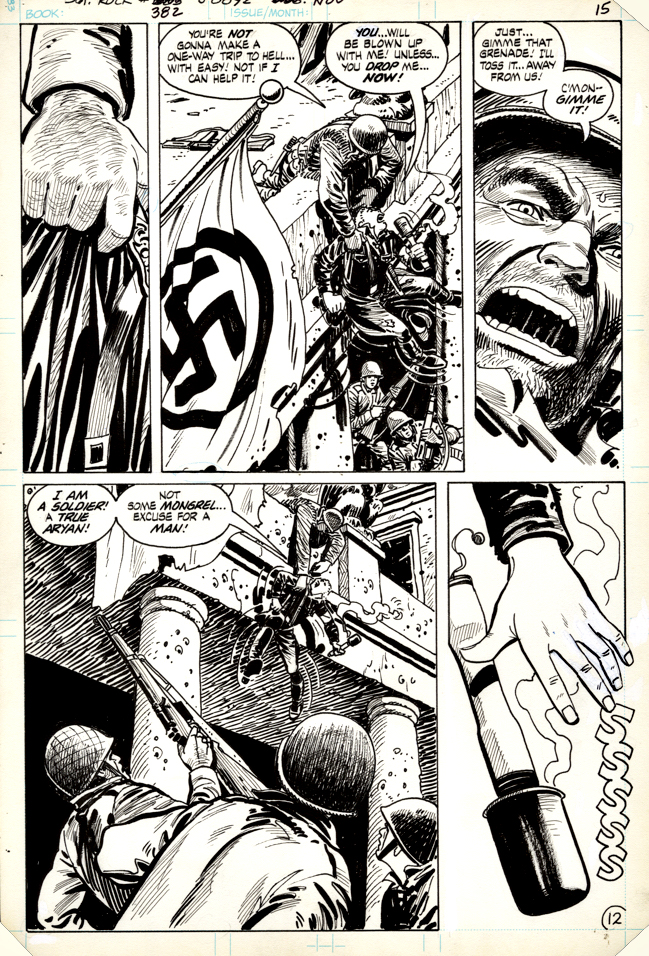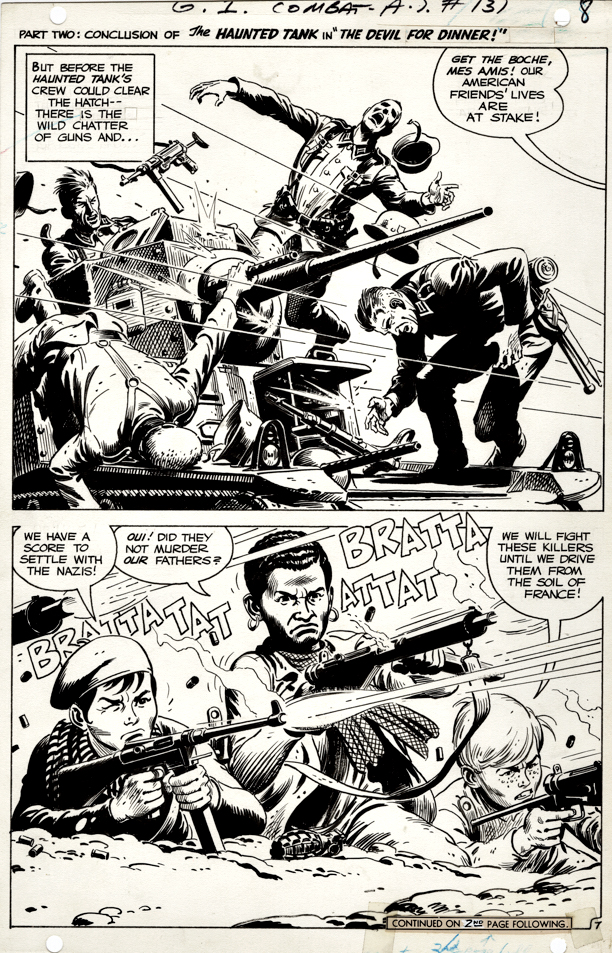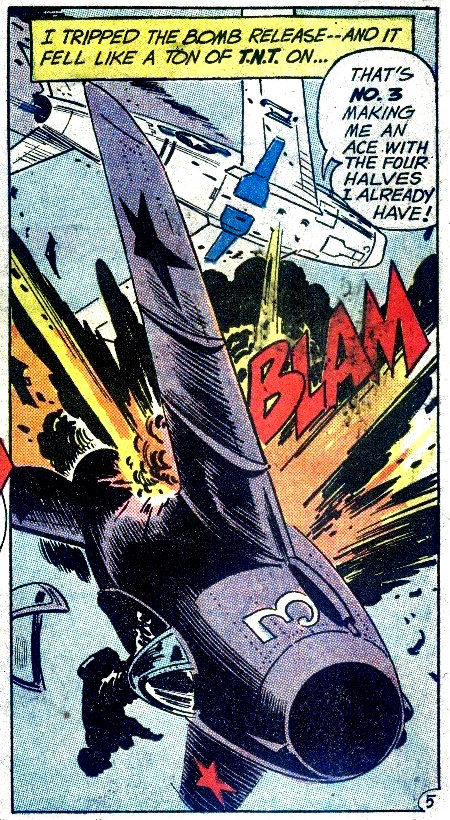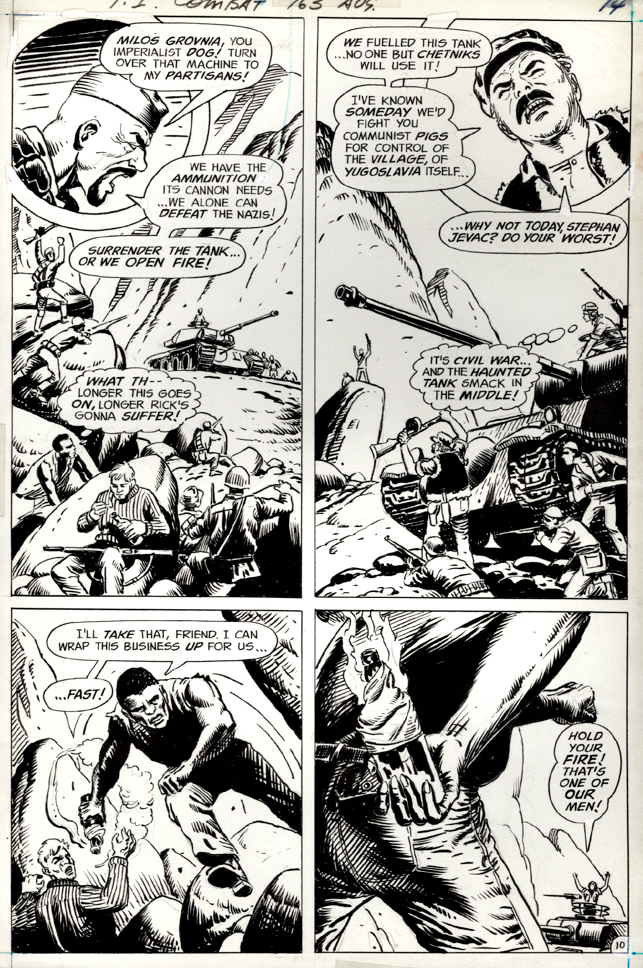Russ Heath — Watch It!
Battlefront #17, March 1954

Here’s a terrific early and rare Atlas war page form the legendary artist, Russ Heath.
This page’s great dogfight reminds me of some of Russ’ later DC work, including the classic “Aces Wild” in All-American Men of War #89, otherwise known as Roy Lichtenstein’s favorite comic book. Lichtenstein, the renowned pop art pioneer, “appropriated” (swiped / repurposed / purloined — take your pick) two Heath panels from that story, as well as others in that issue. (See below.)
Those paintings are worth millions of dollars. Multi-millions.
The best 12¢ anyone ever spent.
Happy Veterans Day to all who served!
Fun Fact: Russ, a veteran, used himself as reference for the role of Major Leo Grabeski (also below) in this extremely multi-cultural group of airmen.




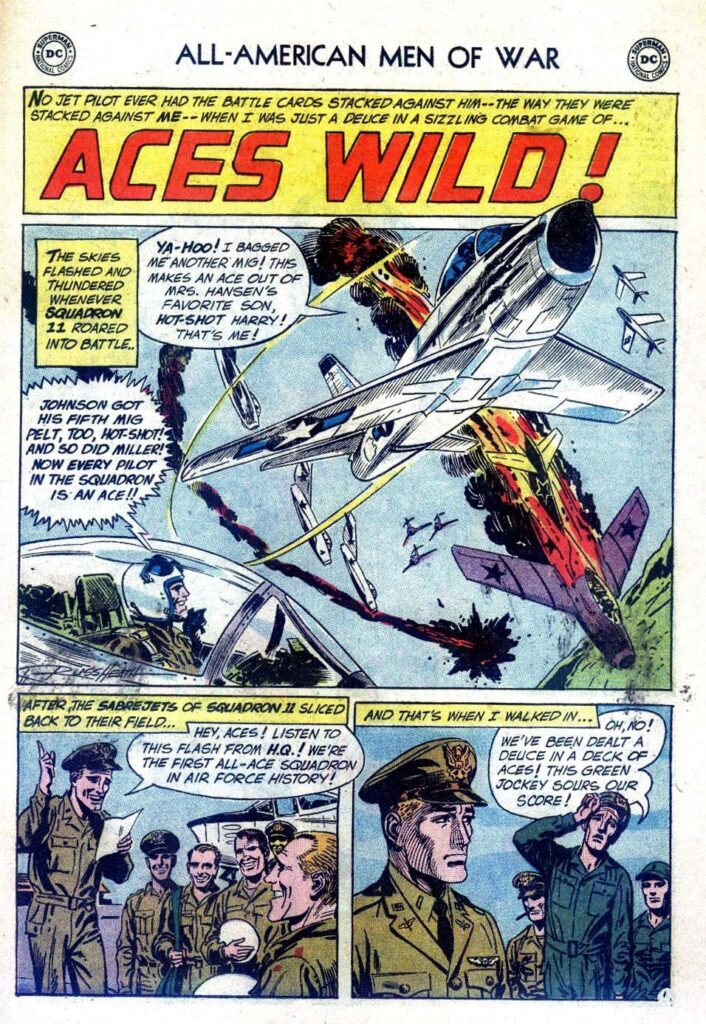



Two Heath panels from the same page from “Aces Wild” story (All-American Men of War #89, 1962) became the basis for two well-known Roy Lichtenstein war paintings: “Brattata” and “Blam.”.
A panel from an Irv Novick’s story in the same issue was the basis for Lichtenstein’s “Whaam.”




